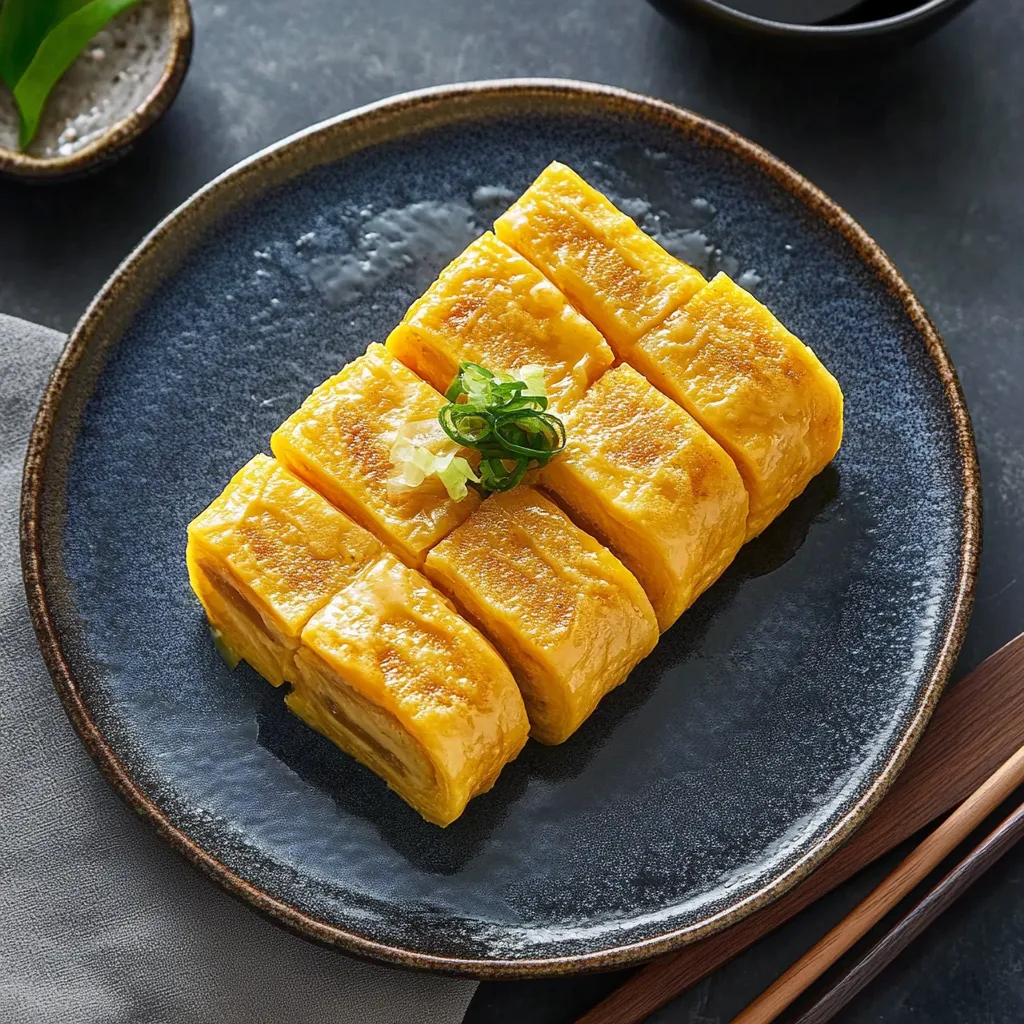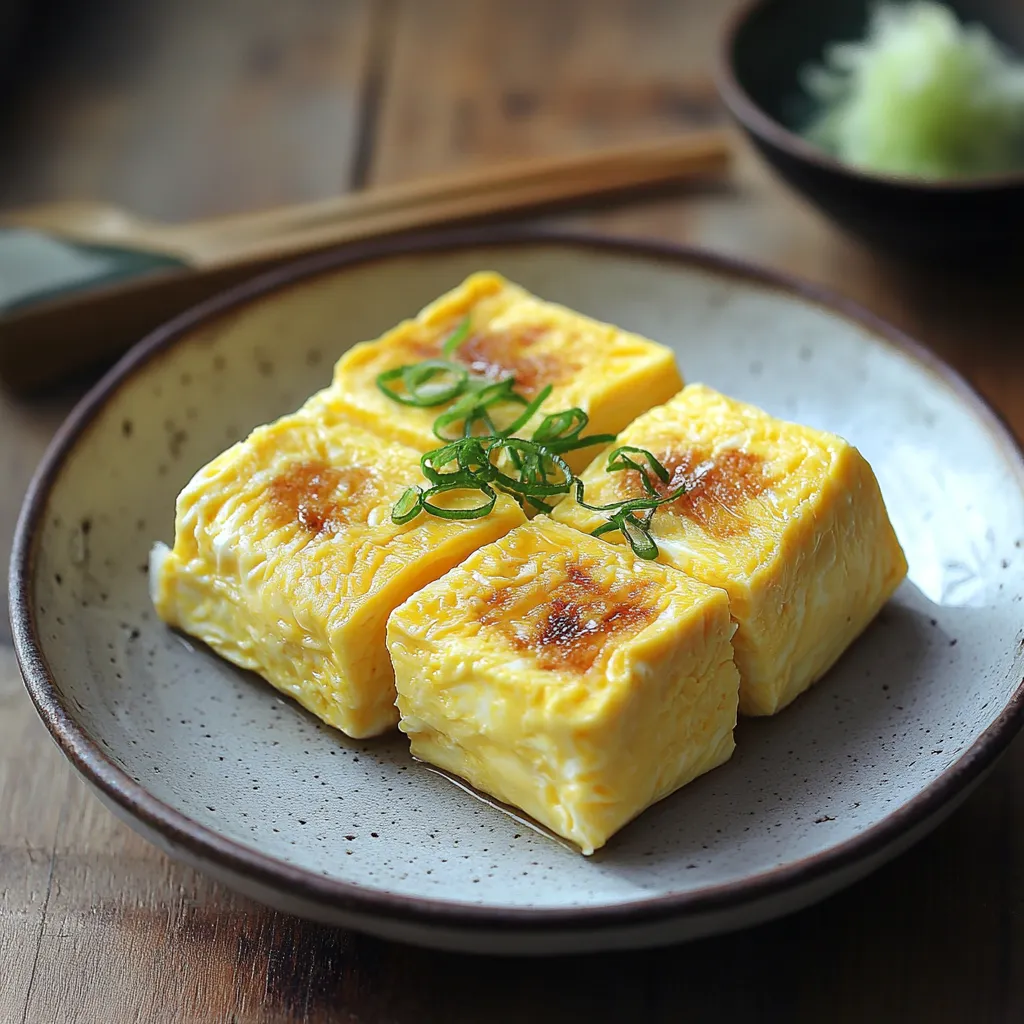 Pin
Pin
The art of making tamagoyaki lies in understanding the delicate dance between heat, timing, and technique. Through years of practicing this Japanese rolled omelet, I've discovered that its beauty comes not just from the ingredients, but from the meditative process of creating those perfect, golden layers. Each roll builds upon the last, creating something that's both visually stunning and deeply satisfying.
Last weekend, I served this at a Japanese-inspired brunch, and guests watched in fascination as each layer came together. The secret? Understanding how temperature and timing work together to create those perfect, custard-like layers.
Essential Ingredients and Selection Tips
- Eggs: Use room temperature eggs for even blending and cooking.
- Mirin: Choose good quality mirin for authentic flavor.
- Dashi: Homemade dashi provides the cleanest flavor, but instant works in a pinch.
- Soy Sauce: Japanese-style soy sauce balances salt and umami perfectly.

The Art of Preparation
- Prepare the egg mixture:
- Crack eggs carefully and beat gently with chopsticks or a fork until just combined. Add sugar, mirin, and soy sauce gradually, stirring in a cutting motion.
- Strain the mixture:
- Pass the egg mixture through a fine sieve for the silkiest texture.

Mastering Temperature Control
Your pan temperature is crucial. Start with medium-low heat and test by dropping a bit of egg mixture into the pan; it should sizzle gently without setting immediately. Adjust heat as needed during cooking.
Layer by Layer Creation
Pour a thin layer of egg mixture into the pan. As it begins to set, gently lift one edge with chopsticks or a spatula and roll it over itself. Push the roll back to the starting position and repeat with the next layer, ensuring each connects seamlessly with the previous one.
Chef's Essential Tips
Cultural Context
Tamagoyaki holds a special place in Japanese cuisine, from breakfast tables to sushi restaurants. It's considered a test of a chef's skill, requiring precision and attention to detail. Regional variations reflect local tastes, with some preferring sweeter versions and others leaning savory.
Serving and Presentation
- Serve alongside rice, miso soup, and pickled vegetables for a traditional breakfast.
- For a modern twist, slice thinly and arrange diagonally on a rectangular plate with grated daikon and soy sauce.
Temperature and Timing Mastery
Heat should be low enough to prevent browning but high enough to set each layer quickly. Each layer needs 30-45 seconds to set, and the finished roll should rest for five minutes before slicing. Serve warm or at room temperature for the best flavor and texture.
Seasonal Adaptations
- Spring: Add fresh herbs like shiso leaves.
- Summer: Incorporate diced tomatoes or fresh corn.
- Fall: Include mushrooms or chrysanthemum leaves.
- Winter: Add spinach or nori for heartier flavors.
Teaching Moments

Tamagoyaki offers opportunities to teach cooking fundamentals, such as temperature control, understanding protein coagulation, and developing muscle memory through repetitive techniques. These skills translate to broader kitchen confidence and mastery.
Building Your Japanese Pantry
- Stock Japanese-style soy sauce, mirin, and sake for authentic flavor.
- Keep kombu and katsuobushi for homemade dashi.
- Explore different seaweeds for garnish and flavor enhancement.
Extended Final Thoughts
The art of tamagoyaki lies in its simplicity and precision. Each roll builds layers of flavor and skill, showcasing the elegance of Japanese cuisine. Whether served for a special breakfast or incorporated into fusion dishes, tamagoyaki teaches patience, technique, and the beauty of simple ingredients.
Through countless preparations, I've learned that tamagoyaki is more than a dish - it's a journey of culinary understanding. Mastering this technique not only enhances your cooking repertoire but also deepens your appreciation for the meditative process of creating something truly exceptional.
Recipe FAQs
- → Do I need a special pan to make tamagoyaki?
- While a rectangular tamagoyaki pan is traditional, you can use a small round nonstick pan.
- → Can I make tamagoyaki without dashi?
- Yes, though dashi adds umami flavor, you can omit it for a simpler version.
- → Why is my tamagoyaki brown instead of yellow?
- Keep heat at medium-low and don't let the egg brown for that classic yellow color.
- → Can I make it less sweet?
- Yes, reduce or omit the sugar according to your taste preference.
- → How do I store leftover tamagoyaki?
- Store in an airtight container in the fridge for up to 4 days. Serve at room temperature.
